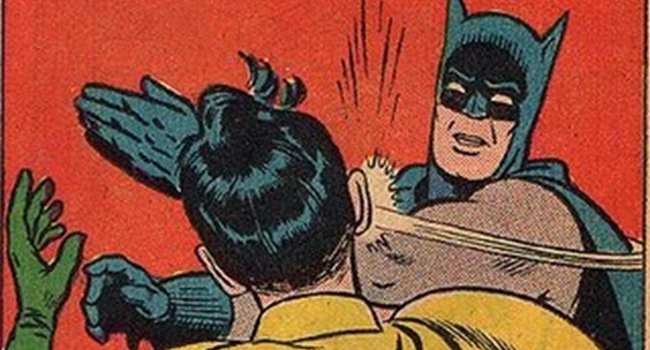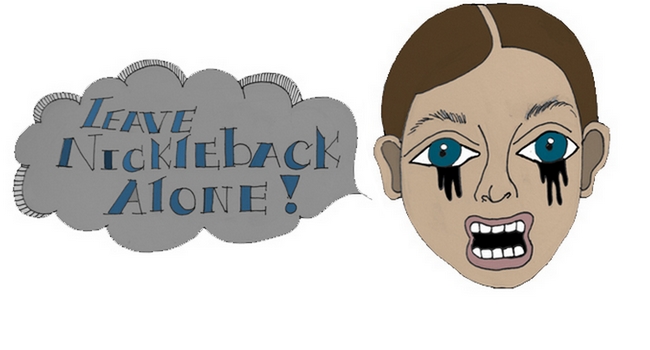You might have had a friend tell you they like vinyl records because they have a “warmer” feel to them. You probably understood it, even if you didn’t really know what they meant by “warm.” As it chances, you don’t save money on utilities by owning a turntable, nor does putting on a record give you warm, fuzzy thoughts (unless it’s Neil Young’s After The Gold Rush), but the term is actually a reference to the sound itself—one that’s been neglected and often is forgotten at the hands of those making music. It’s meant as a crucial lapse in taste, an abandoning of dynamic sounds for the token thrill of volume.
For the past 17 years, music has been getting louder and louder. That might sound like an old-person gripe, but if we examine the majority of releases, it’s true, especially in recordings. It was a decision made long ago by artists, record labels and recording engineers. Formerly, all recordings fell into the same standards for how loud they could be on a pressing. No one strayed because at the time, it wasn’t only a standard; it was widely held to be the most well-rounded quality possible.
For most of the 20th century, music was heard either live or through a jukebox—the was volume controlled by whomever owned the venue. Certain facets of the industry, most notably Motown, realized they had no power over an owner’s preferences, but what they could control was the volume of the record itself. To make an impression on listeners (and particularly dancers), labels such as Motown began to bump up the frequencies of their records so that it would play a bit louder than the last, making it stand out in memory.
Of course, when one artist gets the treatment and the others get wind, what ensues is something like an arms race of noise. In the end, limitations proved lucky for vinyl; the format, loudness and compression could only be tampered with so much, lest the record itself be ruined. It was a different story by the 1980s.
Although über compression might seem like a choice—and it is—it began out of technological necessity. The arrival of the compact disc forced wavelengths and frequencies to be hemmed in, given the limitations of the format. Guns N’ Roses’ Appetite for Destruction (1987) was one of the first albums of note to get the treatment. Its sounds clocked in at -15dB, dangerously near the “red” level that remains in most speakers at zero dB—where sounds become distorted and unintelligible from one another. By the early 1990s, Metallica, Alice in Chains and even Soundgarden put out new releases with the new, earsplitting dynamics in mind.
Studio engineers might be the wizards behind the change, but it wouldn’t have been possible without a change in aesthetic from artists, industry moguls and, of course, the consumers themselves. Almost entirely across the board, people came to expect loudness. Pop-punk records wouldn’t be pop-punk without piercingly bright guitars that grabbed you by the ears, backed by relentless kick drum and bass syncing. Hip-hop wouldn’t be hip-hop without 12 inch subs to rattle the three cars next to you. And pop tunes—well, you get the picture.
Many of our most beloved albums have either been recorded with intent to loudness or have been remastered in a way that brings the noise above all else: Red Hot Chili Peppers’ Californication, Flaming Lips’ At War With the Mystics, Arctic Monkeys’ Whatever People Say I Am, That’s What I’m Not and even Bob Dylan, an outspoken critic of “loudness,” was criticized for the mastering on Modern Times. Iggy Pop’s 1997 re-release of the Stooge’s album Raw Power is considered one of the loudest albums of all time.
And it’s not just the axiom that “recording quality has changed.” Sure it has, but only minutely compared with the way it has changed in presentation. Anyone can hear it. It’s why Led Zeppelin IV (1971) sounds recessed and dull-edged compared with Metallica’s Death Magnetic (2008).
Because the sounds on LZIV haven’t been wrangled into an extremely narrow channel, an acoustic guitar might be momentarily buried beneath an organ—if you examine the waveforms, Death Magnetic will essentially appear as a solid blur while LZIV reveals, well, waves that rise and fall. If you had a good enough sound system you could feel the space between instruments in LZIV with increased volume, where the more modern Death Magnetic has to be played loudly just to hear the quality the engineers intended. The reason certain instruments seem inconspicuous in LZIV is precisely because nothing was done to force them out—they’re given their own air, each sound develops clearly and is then released, hence the term “warmth.”
So what’s the answer? The 2000s thus far have come to be known by critics as the high watermark of volume, the midst of what has been deemed “The Loudness Wars.” Little has been done by way of pop music to curb the noise. However, indie artists have taken advantage of a niche market, producing albums at artist-desired levels. That means giving sounds space to breathe. One need not look much further than a record by artists such as The Walkmen or Fleet Foxes. It’s not that these records are vintage-inspired or naturally quieter, but that they’ve recorded the music the same way it was before pre-Loudness Wars standards were set. More and more, artists on both sides of the charts are beginning to see the light.
There’s a now-famous YouTube video of engineer Matt Mayfield explaining the phenomena with visuals. He puts it best: “When there is no quiet, there can be no loud.” What can you do to prevent reckless noise pollution? In March of each year, there is “Dynamic Range Day” bent on spreading the word about dynamic versatility and showing record companies there is no link between loudness and sales. One can opt to use the power of the consumer and choose albums that don’t resort to jacking frequencies to sell. That’s not to say you should change your tastes, but can choose to show your preference for the original over the remastered version. By buying vinyl, consumers could save music from drowning in static and a wall of noise.



